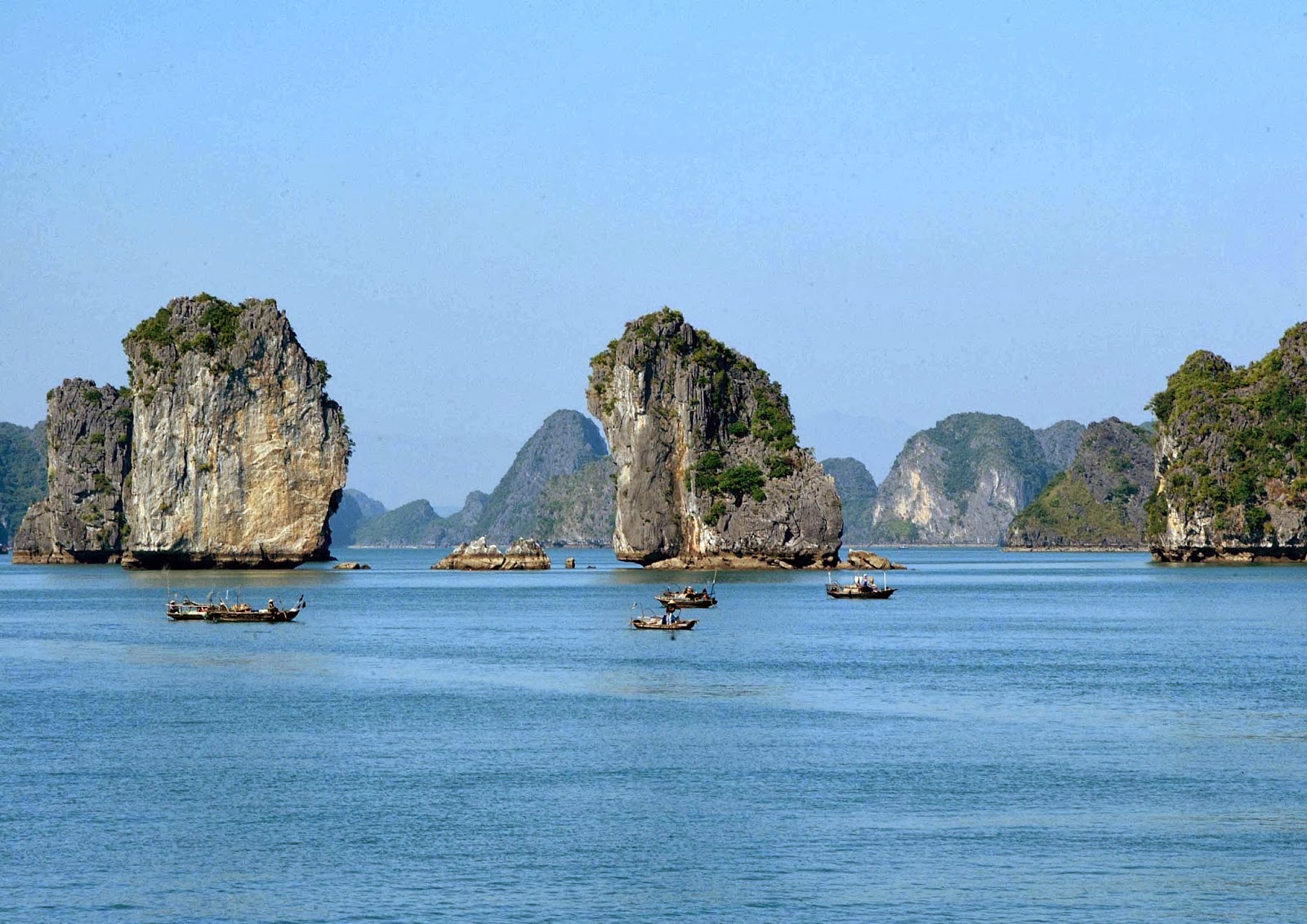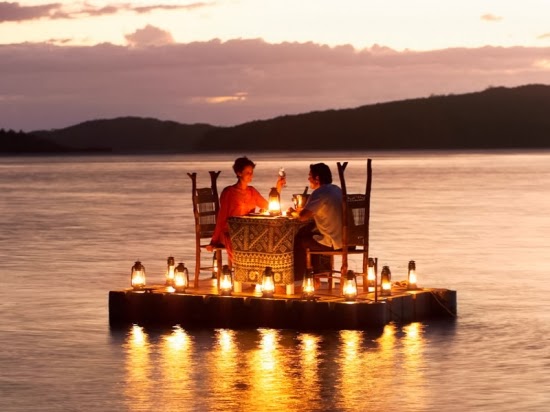Vietnam Travel News
Post: 17-07-2015 10:18:36 AM - Views: 21966
Ha Long Bay the northeastern province of Quang Ninh province includes some 1,600 islands and islets, forming a spectacular seascape of limestone pillars. Exploring the islands of Ha Long Bay with Newyouth Tourism.

Legend says Ha Long Bay was formed by a Mother Dragon and her children, sent by the Jade Emperor to protect the Viet from foreign invaders. The dragons flocked from Heaven, spitting out pearls which formed small islands and stopped the invaders and destroyed their ships. Mother Dragon and her children didn’t return to Heaven after the battle, but settled in the bay; the Mother Dragon forming Ha Long Bay and the children, Bai Tu Long.

Exploring the islands of Ha Long Bay almost makes this incredible story seem true. Weaving through the almost 2000 islands while sitting atop jade-green water is surreal to say the least, spiritual at most.
Halong Bay sea forever remain a bright green color, flows quietly, absorbed with time. Halong beautiful four seasons. In the spring, the lush vegetation shoots mike on limestone mountains. In summer, cool and clear, the sun shimmering particles fall down to the sea. Autumn, in the moonlit night, moonlit mountains inclined ball floating like gold leaf to earth.
With such special values, at the 18th Session of UNESCO’s Council of World Heritage held on 17 December 1994 in Thailand, Hạ Long Bay was officially placed on the list of the World Natural Heritage. In 2000, UNESCO recognized it as the World Heritage for the second time for its geographical and geomorphologic values. This confirms the global premier value of Hạ Long Bay.
Hạ Long Bay has an area of around 1,553 km2, including 1,960–2,000 islets, most of which are limestone. The core of the bay has an area of 334 km2 with a high density of 775 islets. The limestone in this bay has gone through 500 million years of formation in different conditions and environments. The evolution of the karst in this bay has taken 20 million years under the impact of the tropical wet climate. The geo-diversity of the environment in the area has created biodiversity, including a tropical evergreen biosystem, oceanic and sea shore biosystem. Hạ Long Bay is home to 14 endemic floral species and 60 endemic faunal species

Islands
Ha Long Bay is dominated by Cat Ba island. Local inhabitants are concentrated toward the southern end at Cat Ba village. These people generally make their living from the sea but tourism has seen a boom in the last 10 years and hotels have sprung up to meet this demand. Nearly half of the island was designated a national park in 1986 and protects the island’s incredibly diverse ecosystem. Subtropical evergreen forests, freshwater swamps, and coastal mangrove forests, along with small freshwater lakes and offshore coral reefs, are all included under national park protection. With very few roads built on the island, visitors have an excellent opportunity to hike along trails weaving through these ecosystems to explore either the numerous waterfalls and grottoes carved in the limestone hills or the rocky coastline searching for elusive beaches.

Tuan Chau island is a 2.2-square-mile schist island located north of Cat Ba island with a thick forest and warm white beaches. A road connects this island with the mainland, making it easy to get here without taking a boat ride. Tuan Chau island has been slowly turning into a tourist resort with villas by the sea and attractions including dolphin and seal performances, golf courses, and a market among others. As a contrast to these modern tourist attractions, Tuan Chau has a variety of archaeological sites dating back 3,000-5,000 years as well as a shrine to President Ho Chi Minh.

Ngoc Vung “Gem” island lies south of the city of Cam Pha on the mainland and southeast of Ha Long City near Phuong Hoang (Phoenix) Island. This island is rich in mother-of-pearl and has long been famed for its white sand used in making high quality glass. Rising from the centre of the island is Van Xuan mountain which recently revealed an ancient village letting archaeologists dig into Ha Long’s past civilisations.

On the southeast side of Ha Long Bay lies Cong Do island, an island that displays numerous lagoons and a coral reef on its southwest side. This reef is more than 700m long and 300m wide and is nearly undamaged after preservation in the World Heritage programme. Plans are underway to make a part of this reef a zone for scuba-diving. Vestiges of a city were found as well on the southwest side of the island. These confirmed the existence of Van Dong, an ancient commercial port important in foreign trade.

Titov island, named after an astronaut from the former Soviet Union, welcomes travelers to its large, crescent-shaped beach and white sands. Various tourist services are available on this island including hotels, kayaking, and scuba-diving opportunities.

Dau Be Island, off the southeastern tip of Cat Ba island, is home to the famous Ba Ham lake. This lake is made of three pits joined by narrow caves at the water’s level. Travelers can journey from outside the island through all three lakes by these caves. Schools of fish and shrimp can be seen swimming through under the water while stalactites and other rock formations hang from the ceilings above.

Grottoes
Dau Go “Wooden Stakes Cave” lies just southeast of Tuan Chau island, ideal for a day trip from Tuan Chau. Dau Go is made of three connected caves; the largest is able to hold 3,000-4,000 people and sports the most stalactites and stalagmites of the three. The middle chamber has a large crystal that refracts light into rainbows against the cave walls. The last chamber is famous for its multicolored stalactites and freshwater springs. This grotto is one of the most famous in Ha Long Bay and has long been visited by dignitaries from Vietnam and other countries. Inscribed next to the cave’s entrance are words of appreciation from King Khai Dinh of the Nguyen dynasty.

Kim Quy “Golden Tortoise Grotto” is named after the story of a golden tortoise that helped Emperor Le Loi defeat his enemies. After Le Loi was done the golden tortoise left back across the sea, but encountered numerous evil spirits. The tortoise fought these spirits and won, but was exhausted from the battle. He found this grotto to rest in and turned to stone once inside. A large rock inside this grotto is said to be the golden tortoise. There is also a spring that flows from this grotto year-round under the delicate snow-white stalactites. This grotto can be found just off the north side of Cat Ba Island.

Con Coc (Toad) islet rightly gains its name because it looks like an 8 meter tall toad waiting for rain. It is located east of Cat Ba island.

One of the more famous islets, But (Pen) islet is a large pillar of rock balanced on a narrow neck barely extending out of the water. Half an hour away from Con Coc islet, there is a small beach available for visitors to rest.

These are just a few of the many sights available in a trip through Ha Long Bay. Scattered throughout the thousands of islets are natural wonders, hidden beaches, and fantastic shapes needing only and imagination to recognise them.
And beautiful picture of Halong Bay the best travel destination in Vietnam:










And The beauty of Halong Bay, Vietnam travel video:
If you travel to Vietnam, you can get Vietnam visa on arrival at our website visavietnam.net.vn or contact to Hotline: +84.988.512.577 (Viber), email: thanhnienmoi@gmail.com
Thank you for reading !













 emai1l@gmail.com
emai1l@gmail.com




